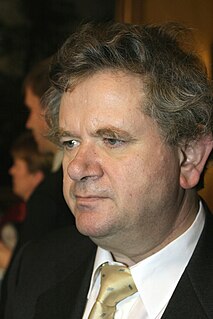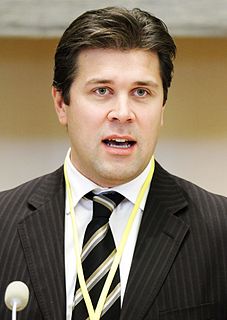
The politics of Iceland take place in the framework of a parliamentary representative democratic republic, whereby the President is the head of state, while the Prime Minister of Iceland serves as the head of government in a multi-party system. Executive power is exercised by the government. Legislative power is vested in both the government and the parliament, the Althingi. The judiciary is independent of the executive and the legislature.

The Alþingi is the national parliament of Iceland. It is the oldest surviving parliament in the world, a claim shared by Tynwald. The Althing was founded in 930 at Þingvellir, situated approximately 45 kilometres (28 mi) east of what later became the country's capital, Reykjavík. Even after Iceland's union with Norway in 1262, the Althing still held its sessions at Þingvellir until 1800, when it was discontinued for 45 years. It was restored in 1844 and moved to Reykjavík, where it has resided ever since. The present parliament building, the Alþingishús, was built in 1881, made of hewn Icelandic stone.
Elections in Greece gives information on elections and election results in Greece.

Ingibjörg Sólrún Gísladóttir is an Icelandic politician from the Social Democratic Alliance, formerly Minister for Foreign Affairs 2007–2009 and leader of the Alliance 2005–2009. She served as representative of UN Women to Turkey and designated regional director for Europe and Central Asia. Since July 2017 she serves as Director of OSCE Office for Democratic Institutions and Human Rights.
Leveling seats, commonly known also as adjustment seats, are an election mechanism employed for many years by all Scandinavian countries and Iceland in elections for their national legislatures. In 2013, Germany also introduced national leveling seats for their national parliament, the Bundestag. Leveling seats are seats of additional members elected to supplement the members directly elected by each constituency. The purpose of these additional seats is to ensure that each party's share of the total seats is roughly proportional to the parties' overall shares of votes at the national level.

Parliamentary elections were held in Iceland on 12 May 2007. The Independence Party remained the largest party in the Althing, winning 25 of the 63 seats.

Parliamentary elections were held in Iceland on 10 May 2003. The Independence Party remained the largest party in the Althing, winning 22 of the 63 seats.

Jóhanna Sigurðardóttir is an Icelandic politician and the former Prime Minister of Iceland. She became active in the trade union movement, serving as an officer.

Katrín Jakobsdóttir is an Icelandic politician serving as the 28th and current Prime Minister of Iceland since 2017. She is the member of the Althing for the Reykjavík North constituency since 2007. She became deputy chairperson of the Left-Green Movement in 2003 and has been their chairperson since 2013. Katrín was Iceland's Minister of Education, Science and Culture and of Nordic Co-operation from 2 February 2009 to 23 May 2013. She is Iceland's second female prime minister after Jóhanna Sigurðardóttir.

Parliamentary elections were held in Iceland on 24 June 1934. They were the first held after reforms to the electoral system that increased the number of seats in the Lower House from 28 to 33 and ensured that all members of the Althing were elected at the same election. The Independence Party emerged as the largest party in the Lower House, winning 14 of the 33 seats.

An Icelandicparliamentary election was held on 27 April 2013. Fifteen parties contested the election in Iceland, compared to just seven in the previous election. The election was won by the two centre-right opposition parties, the Independence Party and Progressive Party, who subsequently formed a coalition government. The parties are eurosceptic, and their win brought to a halt partially completed negotiations with the European Union regarding Icelandic membership.

Ingibjörg H. Bjarnason was an Icelandic politician, suffragist, schoolteacher and gymnast. She was the first woman to become a member of the Althing, the parliament of Iceland.

Parliamentary elections were held in Iceland on 28 October 2017. On 15 September 2017, the three-party coalition government collapsed after the departure of Bright Future over a scandal involving Prime Minister Bjarni Benediktsson's father writing a letter recommending a convicted paedophile have his "honour restored". Bjarni subsequently called for a snap election, which was officially scheduled for 28 October 2017 following the dissolution of the Althing.

The next Icelandic parliamentary election to elect members of the Althing will be held no later than 23 October 2021.
Apportionment in the Hellenic Parliament refers to those provisions of the Greek electoral law relating to the distribution of Greece's 300 parliamentary seats to the parliamentary constituencies, as well as to the method of seat allocation in Greek legislative elections for the various political parties. The electoral law was codified for the first time through a 2012 Presidential Decree. Articles 1, 2, and 3 deal with how the parliamentary seats are allocated to the various constituencies, while articles 99 and 100 legislate the method of parliamentary apportionment for political parties in an election. In both cases, Greece uses the largest remainder method.























